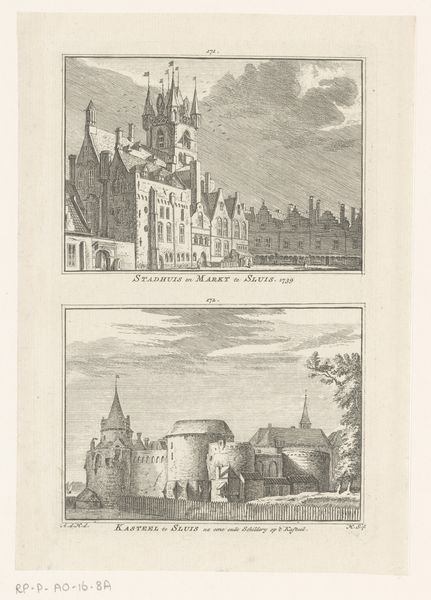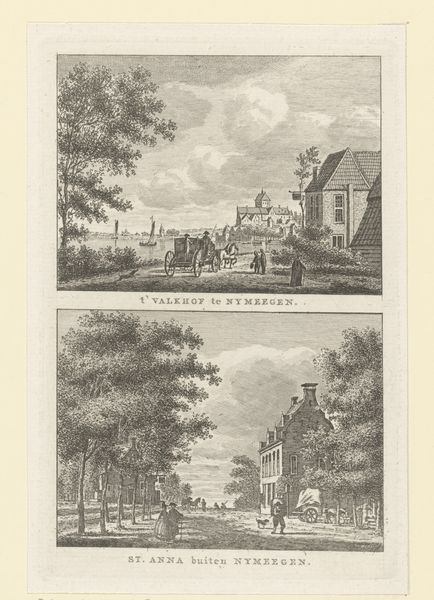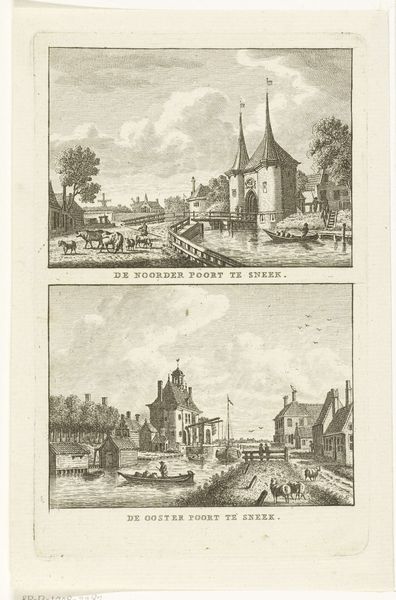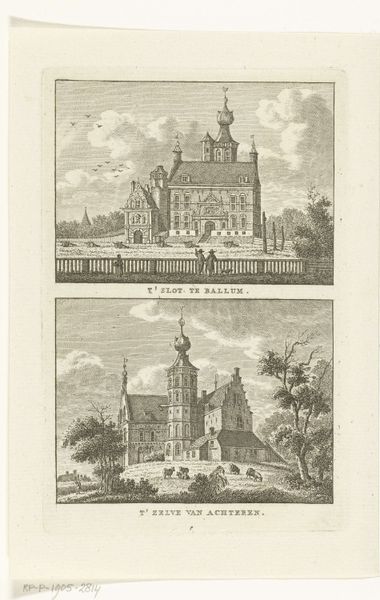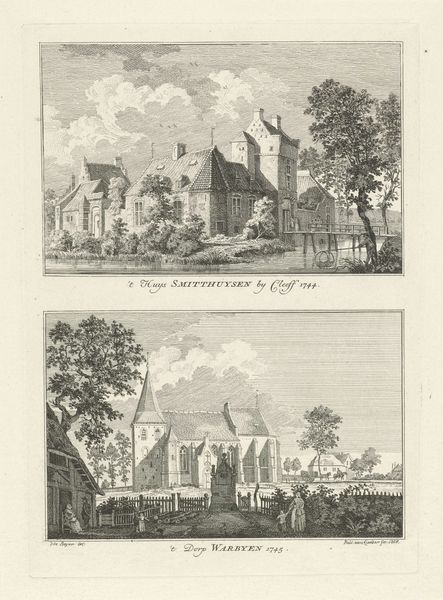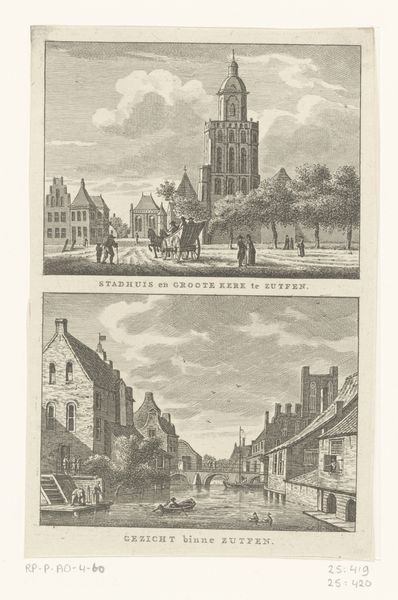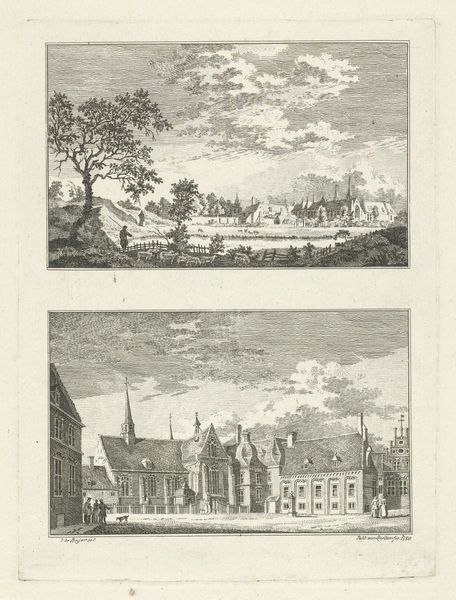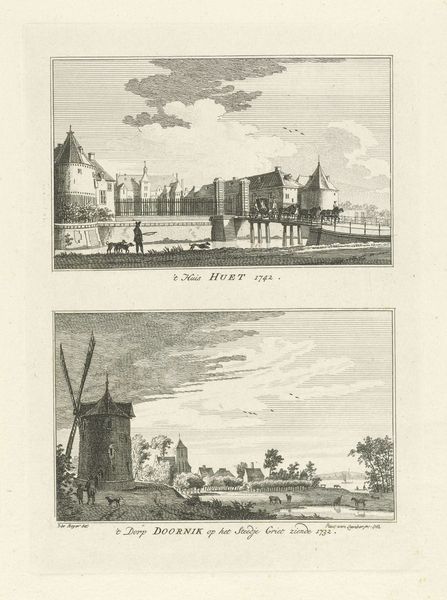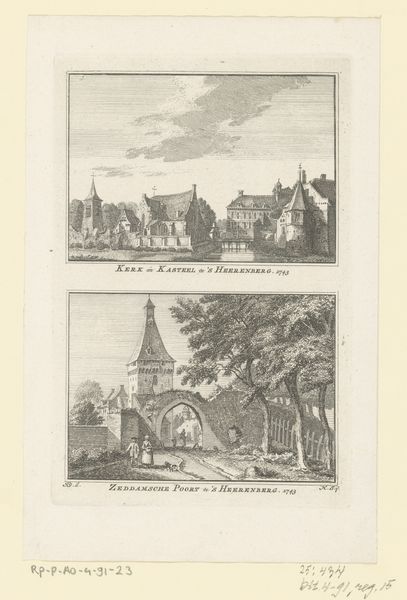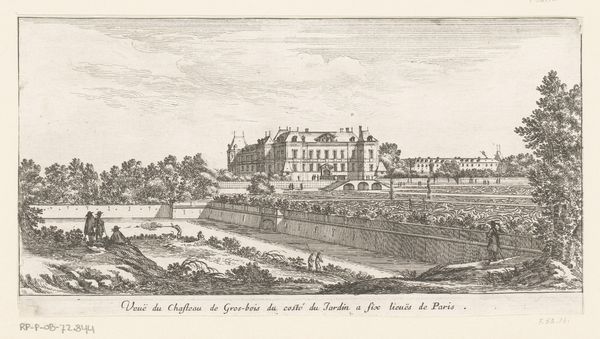
print, engraving
#
dutch-golden-age
# print
#
old engraving style
#
traditional media
#
landscape
#
cityscape
#
history-painting
#
engraving
Dimensions: height 170 mm, width 110 mm
Copyright: Rijks Museum: Open Domain
Editor: So, this engraving is called "Twee gezichten op Slot Ulft," or "Two Views of Castle Ulft," created between 1786 and 1792 by Carel Frederik Bendorp. It's a pretty straightforward depiction, almost like a postcard with two scenes. I’m curious about the social context of this kind of artwork. What can we learn from it? Curator: Exactly! It's easy to see it as just a simple landscape, but engravings like this were often tools of power and representation. Think about who commissioned it, who could afford to buy prints like these, and what message they were trying to convey. Do you see any indications of labor relations here? Editor: I notice figures pulling the boat. I guess they didn't have motorboats in the 18th Century! So there were clearly class and power dynamics at play. Curator: Precisely. Consider the composition. One scene shows the castle from the water, emphasizing its imposing facade and perhaps suggesting a certain inaccessibility. The other view, from the grounds, implies a more intimate access, but also perhaps the control exerted over the land itself. How do these two viewpoints, or gazes, create meaning for the viewer? Editor: So it’s not just about a pretty picture, but a carefully constructed statement about land ownership and control? A bit of propaganda, maybe? Curator: It could certainly be interpreted that way. These images helped to solidify social hierarchies and reinforce existing power structures. Even the idealization of the landscape, the order imposed on nature, reflects specific ideological positions. Who benefits from these views? Whose stories are missing? Editor: It’s fascinating to think about the hidden messages in what seemed like just a pretty landscape. It really opens up my understanding. Curator: Absolutely. Analyzing art through the lens of social and political power reveals hidden dimensions and reminds us that art is rarely neutral. There's always an agenda.
Comments
No comments
Be the first to comment and join the conversation on the ultimate creative platform.
